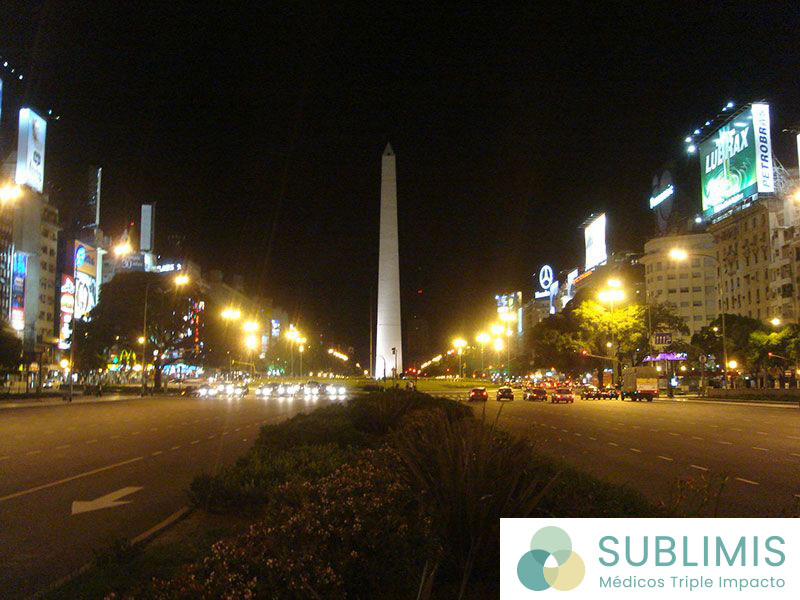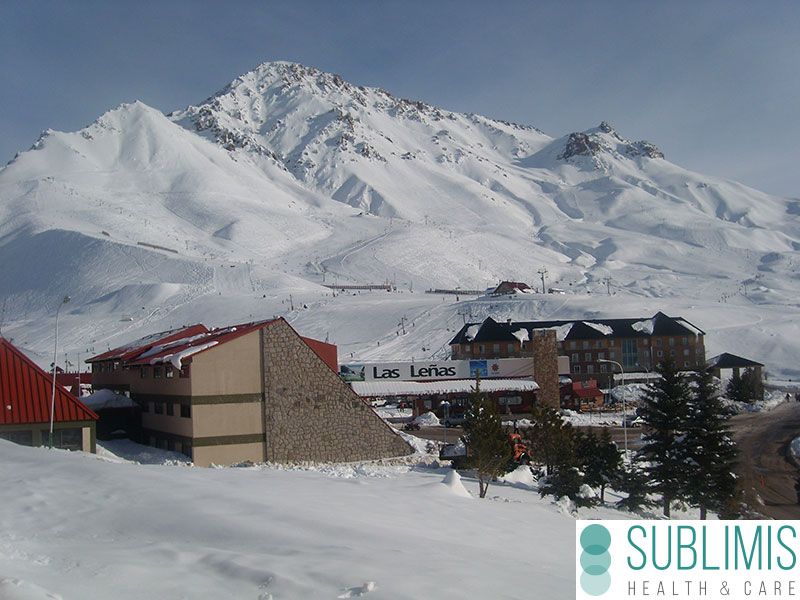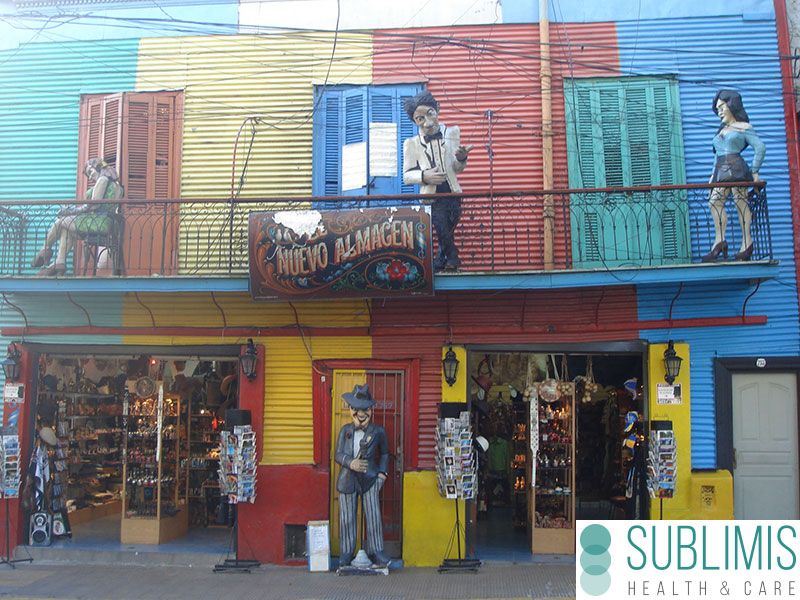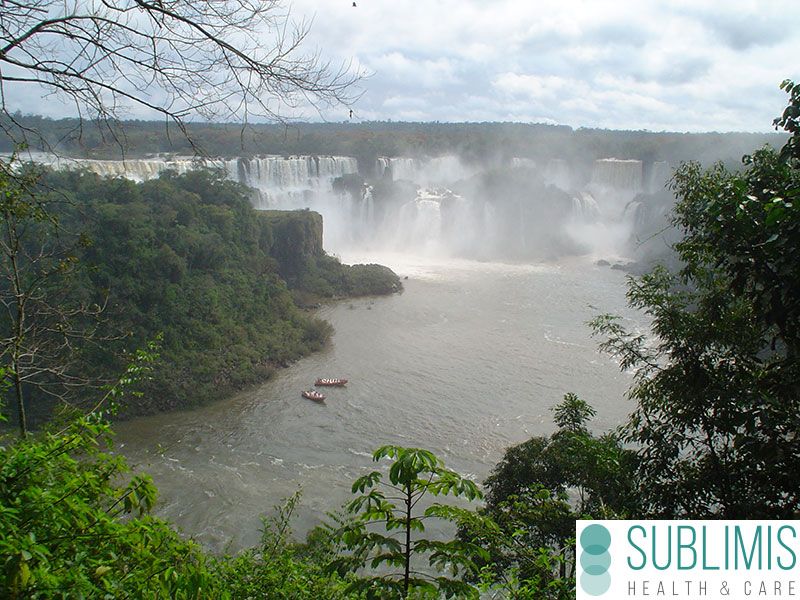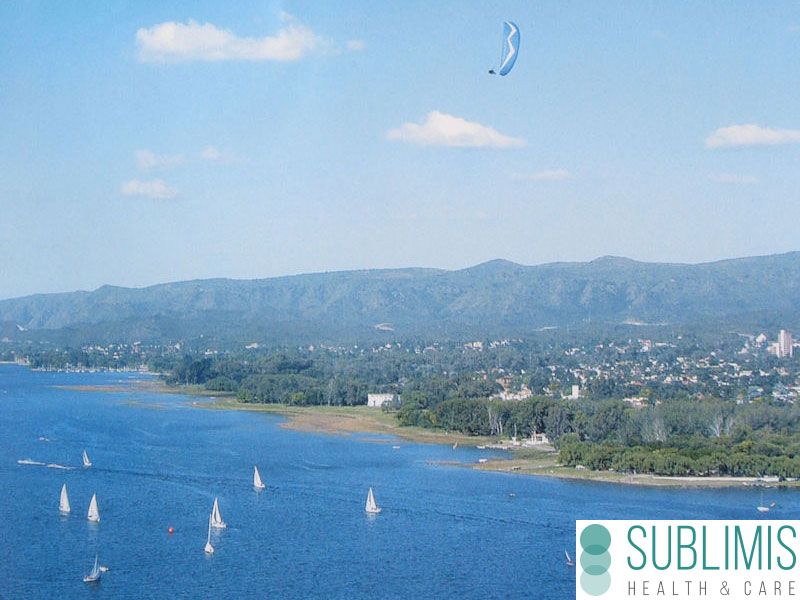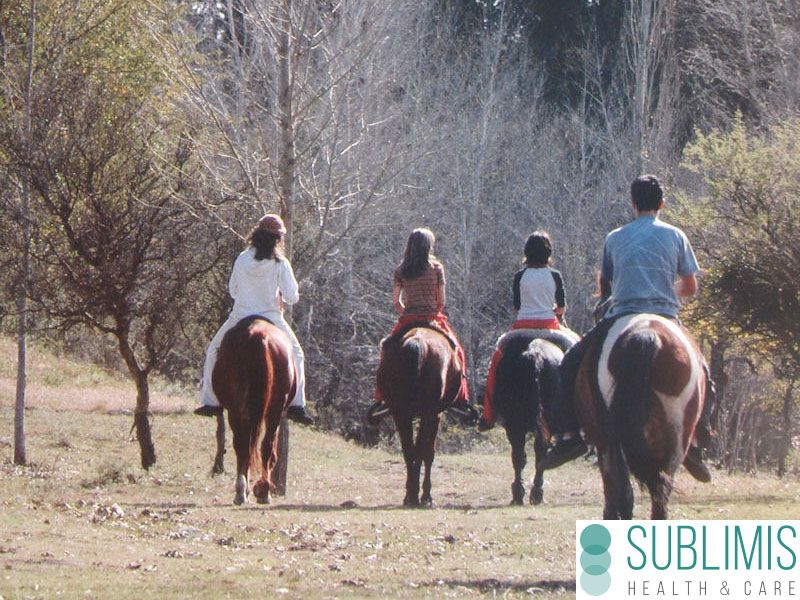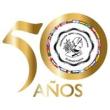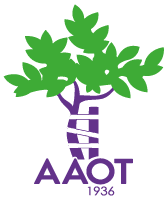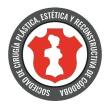We are specialists in medical tourism in Argentina. We take care of all the details of your trip so you can relax and enjoy your stay in Argentina. Our medical tourism program can be resumed in 9 steps:
First Step: Contact Us
Second Step: Contact de Surgeon
Third Step: Patient Confirmation
Fourth Step: Reservations Confirmed
Fifth Step: Your Arrival to Córdoba
Sixth Step: Last Consultations before the Treatment
Seventh Step: The Medical Treatment
Eighth Step: Recovery
Ninth Step: Returning Home
Back home we will remain in contact with you considering that your recovery is very important to us. Medical follow-up consultations using e-mails as well as the phone are available constantly in addition to consultations with recommended surgeons in your country if needed.
faqs, tips and guideline
Not necessarily. As you are going to make a full a full pre-surgical consultation and check up, including a complete medical examination by the specialist and the anesthetist, as well as x-rays, blood and urine tests.
The price advantage reflects the different health service structure in Argentina and the cost of living, which is relatively inexpensive compared to other countries. The setup of medical treatment in this countries are usually including exorbitant fees of all types which is then included in your cost.
Sí, Yes, of course. We will be pleased to assist you with all aspects of your medical trip as well as with tour packages to areas of your interest in the country. Your personal counselor will be happy in suggesting options which may be best for you.
Your counselor will clarify this because there are many options. We recommend a package deal, after your consult us and there, we give you an itemized list of all that is covered.
If you decide to cancel your medical treatment prior to your coming to Argentina, no cancellation fees are charged only a 30% of your deposit is retained to cover the reservations. If you cancel your treatment after admission and your pre-surgical check-up, H&C Sublimis will refund you the total treatment price you paid at your admission, less all charges for the time you have spent in hospital, your pre-surgical check-up costs and administrative costs; any travel cost will not be refunded.
In this case there will be no refunds.
No, the medical team prefers to conduct its own examinations so that they can treat you with their latest findings.
Yes, initially you are requested to fulfill a pre-surgery medical questionnaire forwarded to you via email. During your consultation with the specialist and the anesthetist, it is important to declare the key points again.
Yes, of course. The specialist and anesthetist are available in a previous interview where they answer any questions you may have. They will explain everything in detail so you do not find any surprises.
Once you confirm with us your decision of proceed, we arrange for your medical treatment.
On request, we arrange for you to be received at the airport and transferred to the hotel. You may ask for personal support at any time, with an additional cost, to assist you during the trips and the stay in Córdoba. We advice you to take this service in advance.
Yes. We can arrange hotel bookings for your companion or at the same hospital if it is possible, with an additional cost.
Yes, although the visiting hours are different according to the hospital rules
The anesthetist and the specialist discuss with you during the pre-surgical interview the type of anesthesia to be used. If you have a type preference you mention it at that time.
Each of our hospital partners has a fully equipped intensive care unit , which immediate response when required , served by dedicated medical personnel.
This depends on the medical treatment you want to take.
Send us an email or give us a call and we will answer in detail.
You require only your Passport, as a visa is not required in this country. If you use a Visa or MasterCard credit card, confirm with your bank in your ability of making and acceptance of a payment abroad. A Patient guide is provided at the time you confirm your medical treatment with all the information you require.
Yes, of course. On request, we are pleased to provide you with information of former patients.
Nowadays, Argentina is a third country in the world in amount of cosmetic surgeries after U.S.A. and Brazil. Thus, due to their excellent level in medicine, the argentinian physicians are worldwide well known. Besides, they are used to work with medicine facilities equipped with the most modern technology. At last the currency exchange for those who lives in countries which currency is dolar / Euro / Libra is really convenient. For more info read our About Argentina Section.
In Buenos Aires as well as in Córdoba you find excellent physicians, but the main difference is in the costs of the medical treatment which is around a 30% lower in Córdoba compared to Buenos Aires.From Córdoba we can remark that is the second city most important in Argentina with many advantages over the first. With 1.800.000 inhabitants make posible to notice that is far more quiet, secure and less poluted. But if this is not enough, it counts with excelent hotels, a much benign climate and it is located at few minutes from the mountain. Finally, it is said that the people from Córdoba are really charming.
Because Sublimis most important purpose is to offer to the patient a widely complete service, and not simply to plan an appointment with a surgeon or quickly sign up for a treatment. Our responsibility is to guide the patient from the arrival to Argentina, during the medical treatment and until the return to home. To facilitate the patients choice, we propose a standard trip combo which includes transportation, accommodation and personal assistance service. We also offer other specific services if the patient wishes to combine medical treatments with tourism.
There is no problem, we offer packs that includes bilingual support.
WHY SO LOW COST?
Sublimis provides you the best medical treatment under the care of highly qualified professionals. You may wonder how it is possible that the prices are so low. This is due to two main factors:
-
The cost of living in Argentina is very low compared to European or North American countries. Medicine is no exception, which is why medical treatments in Argentina are cheaper than in other countries.
-
This, together with a favorable exchange rate used in Argentina (USD 1 = ARS 17.5 / € 1 = ARS 20.5 / £ 1 = ARS 23) offers you the opportunity to obtain top quality treatments and affordable prices.
Argentine Tourist Information
Its name comes from the Latin “argentum” (silver), it is given y the first Spanish conquerors who were looking for the high-priced metal in their trips to the River Plate (Río de la Plata).From those expeditions, Argentina receives its name. Nevertheless, it was not named in this way until 1853, year in which the National Constitution is sanctioned. It called the country: Republic of Argentine in order to be the official name for the designation of the government and National Territory.
Location, Extention and Limits
Argentina is located in the southern part of America, and presents an extension of 3.76 million km2, 2.79 belongs to the South American continent, and the rest to the Antarctic continent. Due to his extension, it occupies the fourth place of America and the sixth place in the world.
In the continent, 5,000 km of coasts and 9,000 km of international borders form its contour. With a frontier perimeter of 9,376 kilometers Argentina borders on Uruguay, Brazil, Paraguay, Bolivia and Chile.
Geography
Argentina has four types of main climates: cold, arid, warm and temperate warm. This is possible due to the diversity of relief accidents and the extension of the territory.
The relief consists in a vast plain that included prairies and savannahs, plateaus and mountains.
Population
The current population is about 37 million inhabitants, approximately, 45% reside in Federal Capital and Great Buenos Aires. Between the native Argentineans, a 95% are of European ancestry, and only 5% rest includes mestizos (cross of European and native) and pure native population.
Religion
In Argentina exists freedom of cult. It keeps as main religion the Roman Apostolic Catholic, however, the nation practice others such as the Protestantism, the Judaism, Islam, the Greek orthodox religion, the orthodox Russian.
Currency
The official currency is the Argentine Peso (ARS).
The official language is the Spanish.
Patriotic symbols
The flag is composed by three horizontal strips: a central white with a rising sun and two external, blue celestial.
The national flower is the one of the tree called ceibo and the national stone is denominated Inca rose or the rodocrosita.
Political Regime
According to the National Constitution, the Republic of Argentina is governed with a representative, republican and federal system, and it exists a division of three powers: Executive, Legislative and Judicial. The citizens choose a President that carries out the Executive authority and a vice-president, during the term of four years, being able to be reelects by a single consecutive period. The president chooses his ministers, who advises him and help to manage the following areas: Outer interior, Relations, Defense, Economy, Education and Justice, Works and Services Public, Work and Social Security and Health Publish and Social Action.
The National Legislative Power is had by two cameras that conform the National Congress: the Senate and the one of Deputies.
The Judicial Power of the nation is performed by the Supreme Court of Justice, the Federal Cameras and the federal Judges.
The Argentine Republic is integrated by 23 provinces, and the Federal Capital, Buenos Aires.
The citizens of each province choose their respective provincial governments, who consist in a Governor (Executive authority) and a Legislature, according to each provincial constitution. These authorities take care of, among others subjects, the municipal regime.
Córdoba Tourist Information
Córdoba city is located in the Province of the same name in the heart of Argentina.
It was founded in 1573 by Jerónimo Luis de Cabrera, and it is a catholic city with a great number of churches and colonial-style buildings. Also, it is a national educational and artistic centre with well-known universities resulting in a very young atmosphere. It is recognized as the “students’ city”. It is the second largest city in the country with a population of 1.8 Million of inhabitants.
The province of Córdoba borders the provinces of Santiago del Estero, Santa Fe, Buenos Aires, La Pampa, San Luis, La Rioja, and Catamarca. It belongs to the Pampas region. It has around 8.4 million hectares suitable for agriculture. Livestock and farming provide 25% of the province income. Agriculture is based on the cultivation of soybeans, corn, wheat, and other cereals. Livestock farming focuses on goats, sheep, and native American cattle. The food industry stems from agricultural and livestock activities, revolving around milk, oils, and other cereal by-products. Another significant industrial activity is the automotive industry, as cars and agricultural machinery are manufactured there. Industry accounts for 20% of the province income. Tourism is another growing sector due to the mild climate and numerous landscapes filled with hills, valleys, mountains, streams, and lakes, which allow for countless activities such as windsurfing, climbing, hiking, horseback riding, hang gliding, paragliding, among others. Around 3 million tourists, not only from Argentina but also from other countries, visit Córdoba every year.
Weather
The climate of the county is of continental temperate type. Their climate is severely mediterranean, with warm summers, not extremely strict, and fresh winters. The temperature annual average is understood approximately 16°C. The precipitations register fundamentally during the summer, overcoming the annual 800 mm, not including the northwest where the rains rarely complete 200 mm per annum. Because of the combination of singular natural elements it is likely to find in the County of Córdoba distinctive regional climates and local particular microclimates.
Geography
Cordoba presents two thirds of its territory with plain areas, wich belongs in part to Pampean plain, an in part to Chaquenian plain. Then the plain rises until the foot of the mountainous chains belonging to the system of the Mountains.
Although the plain is very uniform, it presents extensive depressions that give place to two important formations, a the large salted lagoon called Mar Chiquita and the other one the extensive half-deserted plain called Salinas Grandes, covered with salt; both located in the north of the province. Also, there are low lands in the south: plain of the Carlota and the surroundings of the lagoon called La Amarga. At the west of the county they are distinguished three mountainous relieves that integrate the most southern cord in the Mountains Pampeanas, clearly under the name of Mountains of Córdoba. It occupies great part of the region, being guided of north-south, their oriental cord are characteristicly soft on the contrary of the Westerners which are abrupt, corresponding to the Mountains Pampeanas.
Activities
Córdoba has beautiful scenarios in the county as well as many shows and interesting historical places in the city. It is possible to visit them while in Argentina. Tourists will find security and comfort in this city. Tourism can be enjoy in many way, Córdoba has many options such as:
-
Ecologic Tourism: Córdoba has protected districts and natural environments which can be visited and enjoyed while being in direct contact with nature.
-
Golf: Córdoba offers the chance to enjoy the quality first level Golf courses, located within minutes from the center of the city and adorned with the typical charm of Córdoba´s hills.
-
Sport fishing: The clear waters filled with trouts challenging the better fisher, surrounded by majestic landscapes invite to live an unforgettable experience.
-
Food routs: These routes allow to appreciate the regional production as an expression of the cultural identity of the people. Tourists may try their homemade products and regional cuisine and learn a lot about the production cycles of the soil.
-
Cultural Tourism: exceptional contributions to the art signals Córdoba as an important cultural paradigm in Argentina. Since ancient times, this province was highlighted by its cultural activities; witness of this is the most important prehistorically archaeological site in Argentina, located in Cerro Colorado, Córdoba. This place as many others related to the great history of the conquerors until nowadays.
-
Adventure Tourism: Tourists have the opportunity to enjoy alternative Tourism in every Valleys of this province. Options are endless since Córdoba has devoted a third part of its surface for the development of tourism. Our open spaces invites to practice 4 Tracks, Nautical Activity, Air Activity, Trekking, Hiking, Hunting, Sauna-Spa, Climbing, Mountain Biking, Paragliding, Rafting, Fishing, Horse Riding, scuba diving, and other alternative tourism activities, all extremely close to each other and only a short distance away from the city.
-
Rural Tourism: The best alternatives to stay in are the rural hotels, the traditional farmhouses or the rustic inns located in the middle of the mountainous scenery. Farms with rich history, places with agricultural and cattle raising activities, stands surrounded by arid or fertile landscapes, all promising to fully enjoy the comfort or lead an ordinary life according to the traditions of the place. All these farms have exclusive and personalized attention.
-
Northern Córdoba Mysterious lands of legends , of long processions that went across the Herat of each town when they want to show their faith. Each year, different towns organize their festivals according to the tradition, accompanied with local music.
-
Idiomatic Tourism: The purpose is learning the local language.
Services
-
Public health: The public hospitals offer free-of-charge assistance to tourists in case of medical emergencies.
-
Banks: The banks are open from 8:30 A.M. to 1:30 P.M.; it is required to show the passport in order to change currency.
-
Cash Machines: All over the city is easy to find cash machines, that are available 24 hours, and where is possible to withdraw either pesos or dollars.
-
Drugstores: Big drugstore chains and small ones in the neighborhoods are open 24 hours.
-
Stores and malls: Big stores accept credit cards and most shopping malls accept dollars. Small stores and kiosks only take cash. In bars, usually a minimum charge is required for paying with credit cards.
-
Restaurants: In Córdoba, people usually have dinner after 9 P.M. In downtown, they remain open even after midnight.
-
Transportation: The buses network has a good service. It is possible to buy a guide where to find the routs they follow. There are also taxis, some of which can be called from anywhere in the city.
SEND US YOUR CONSULTATION
